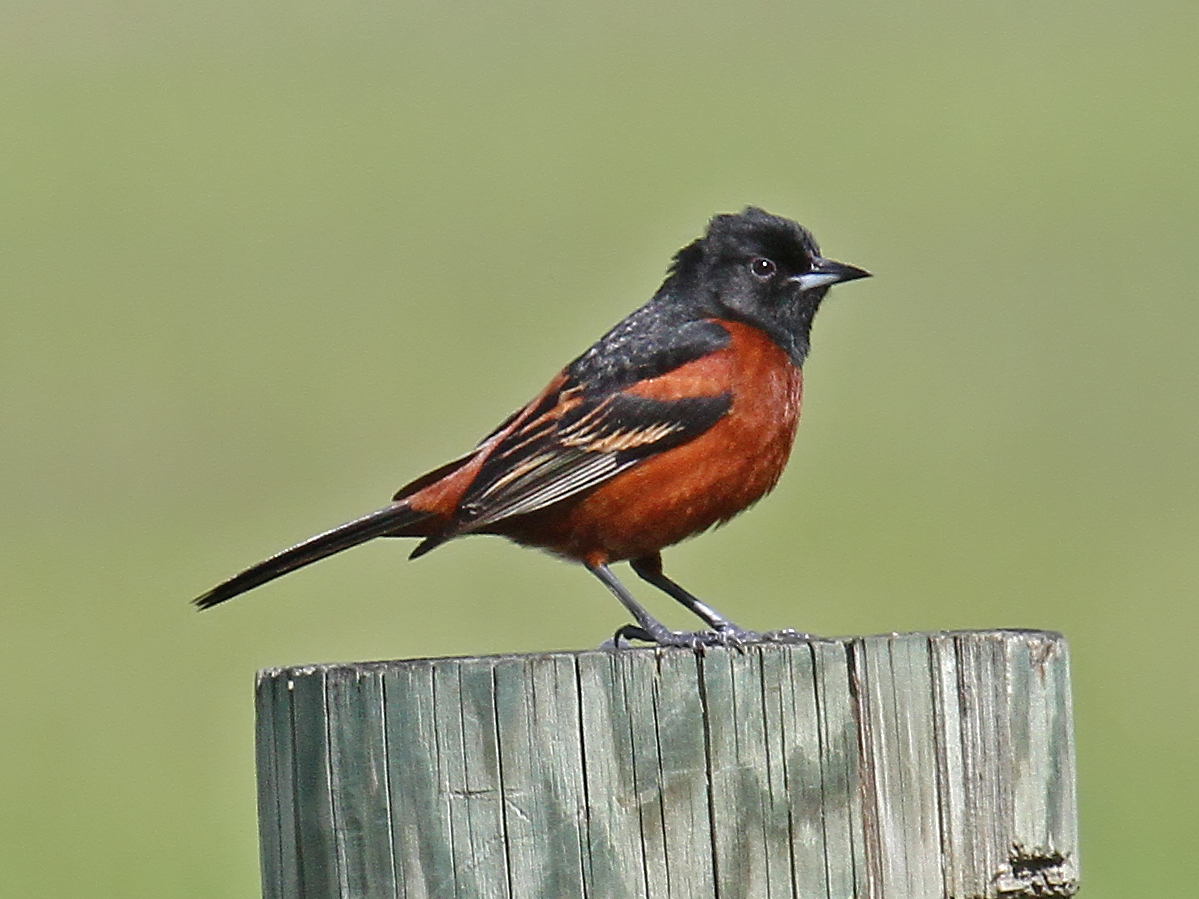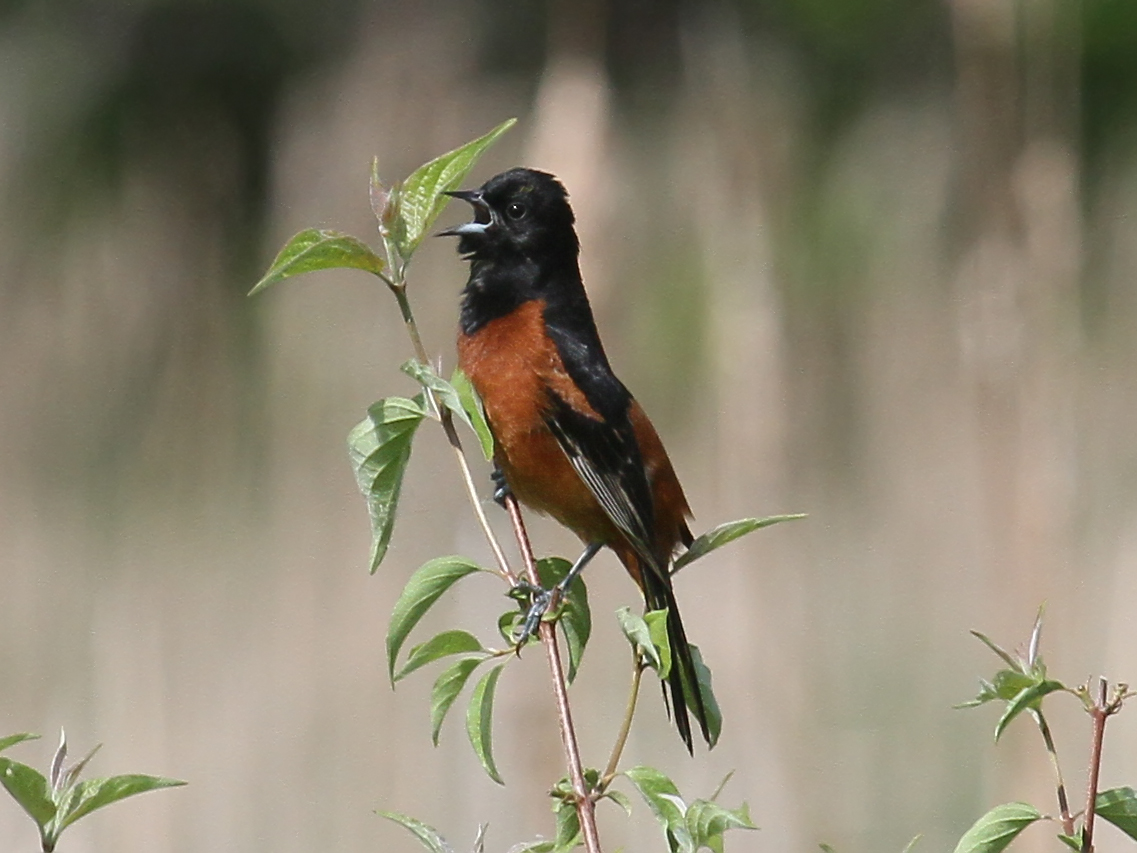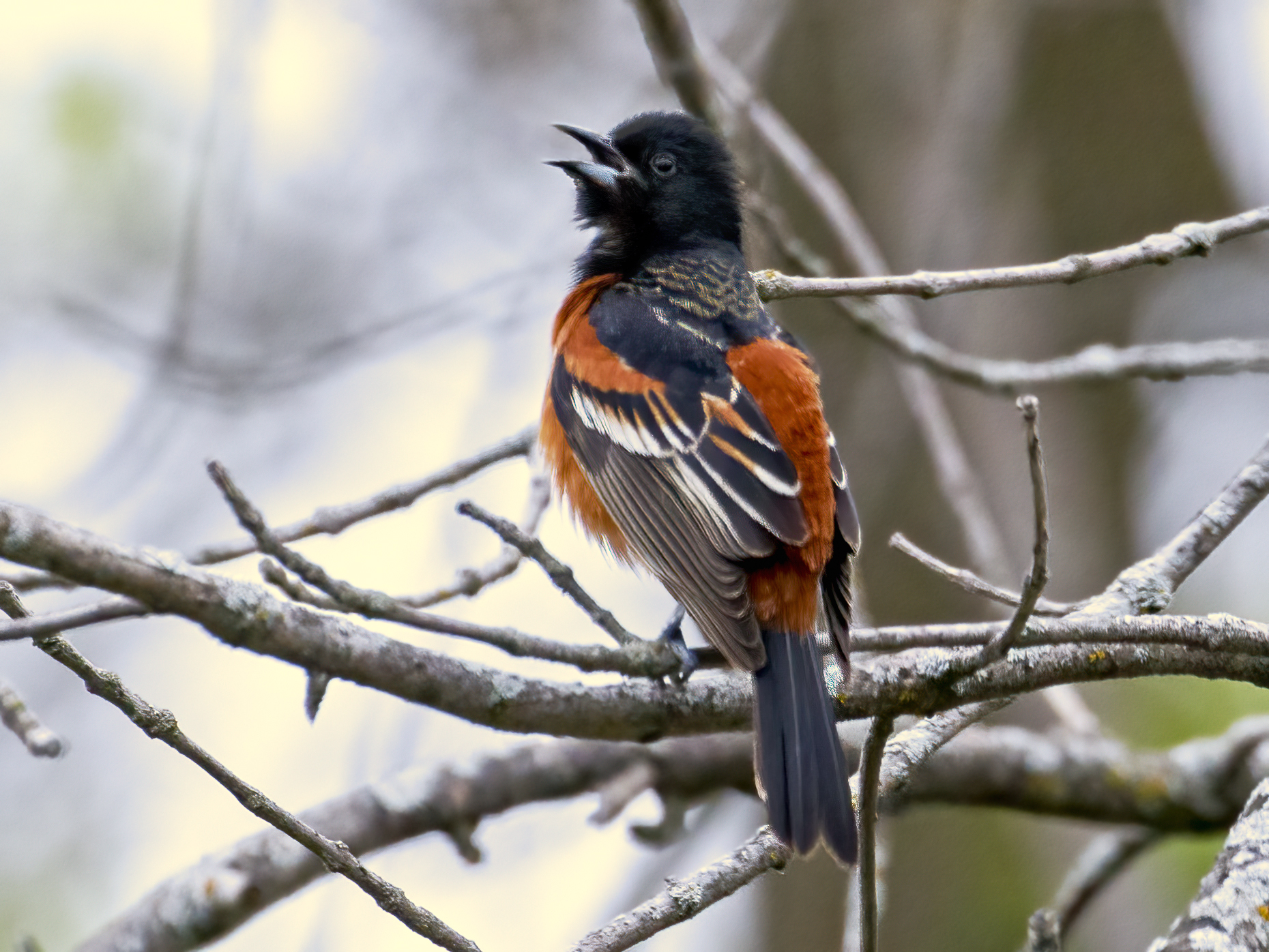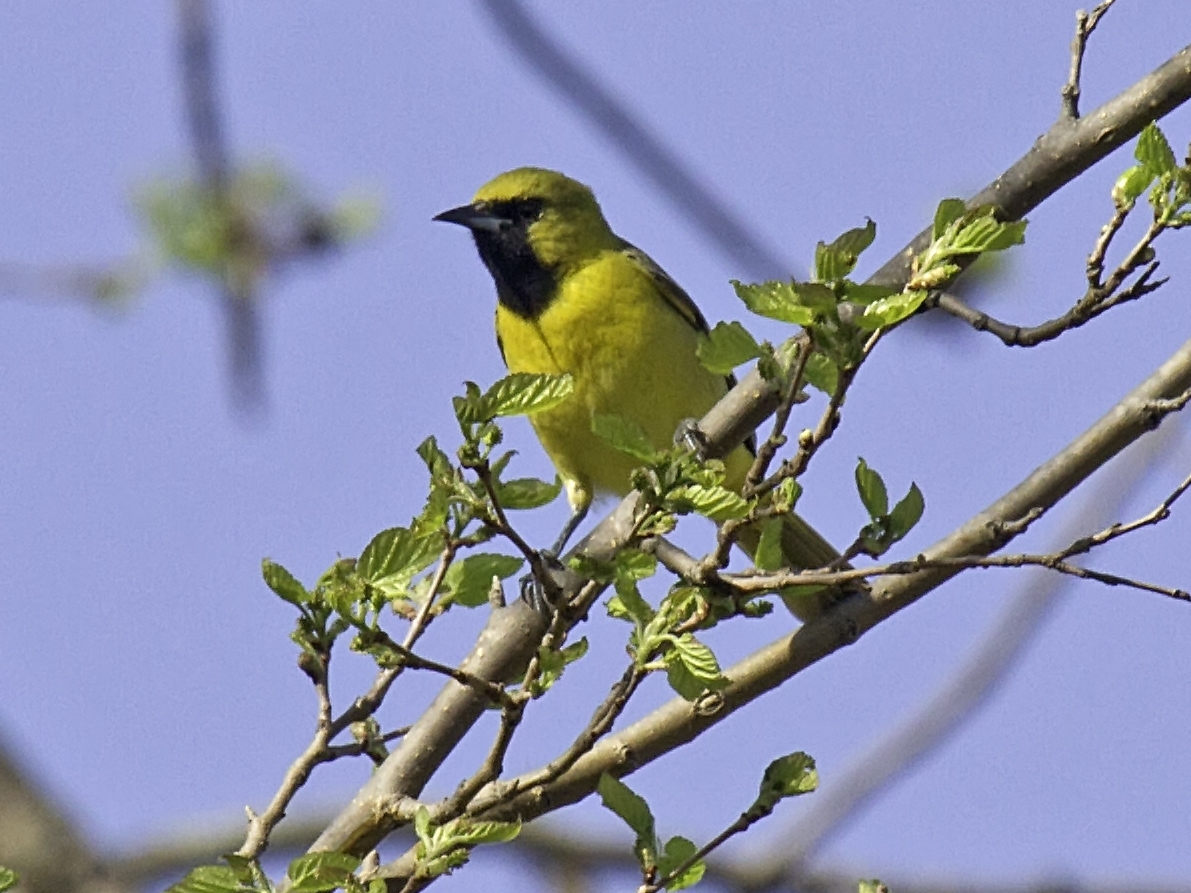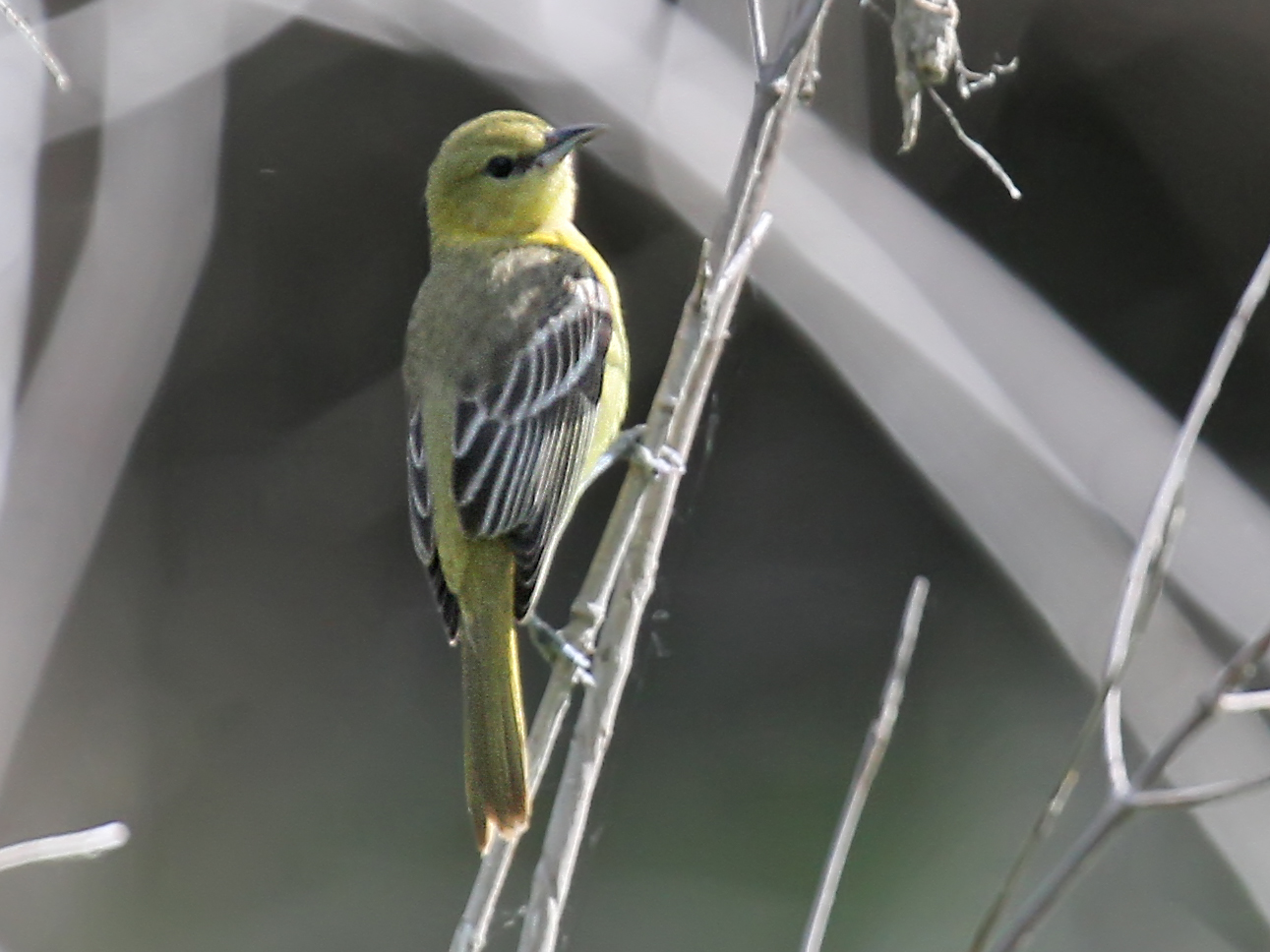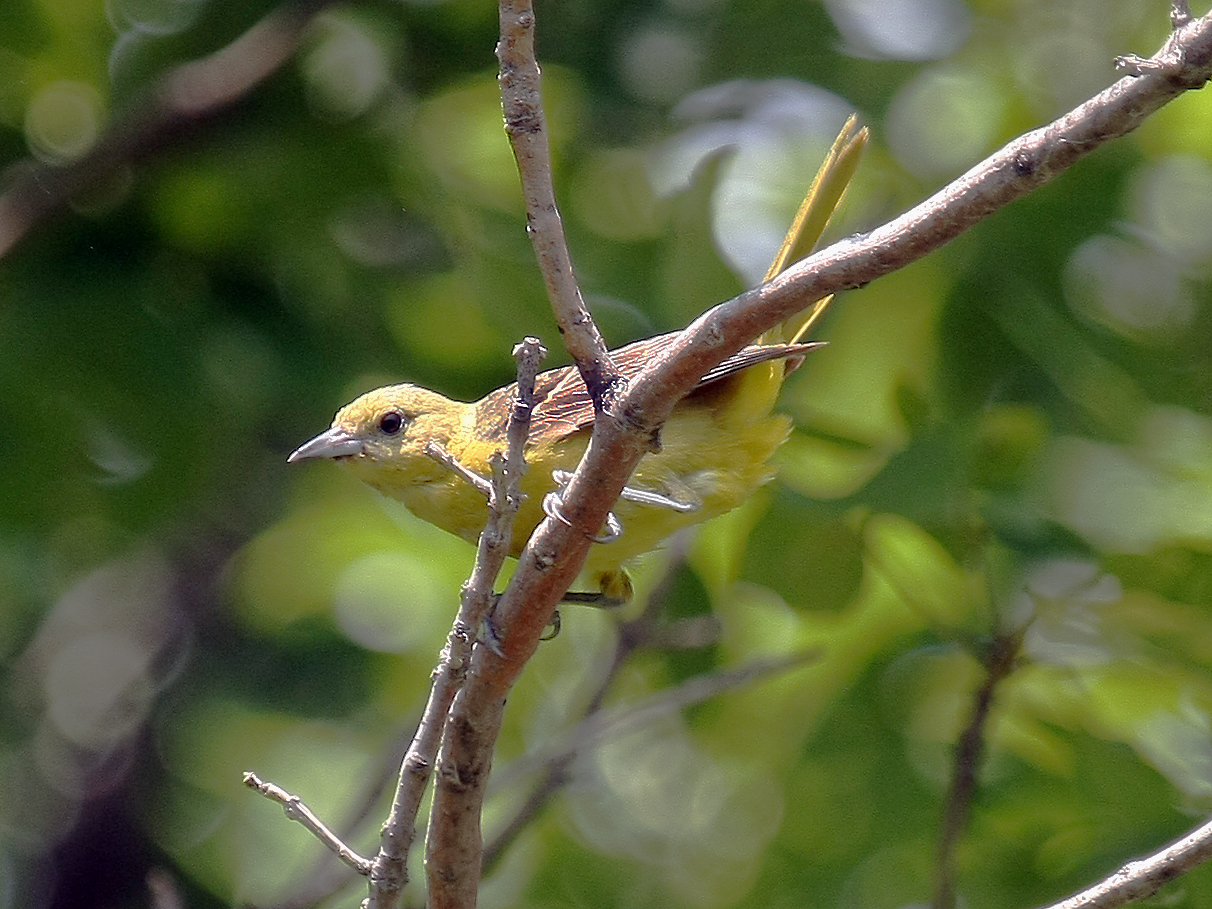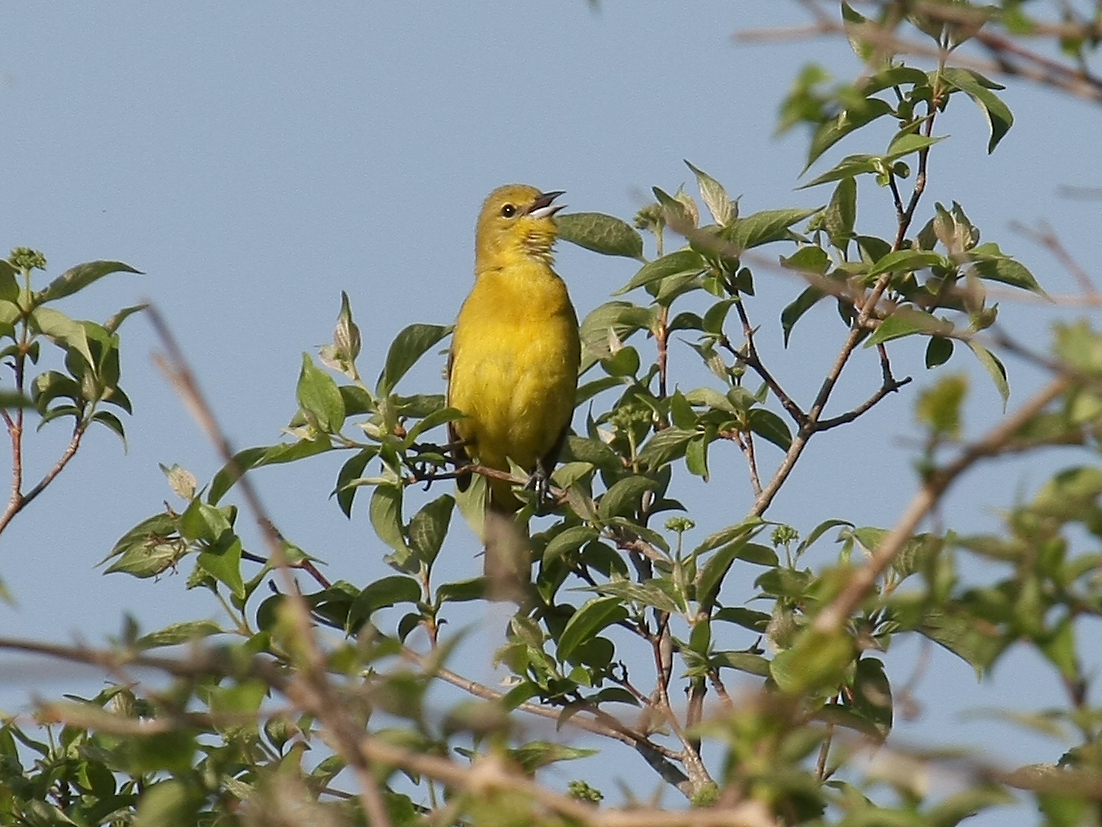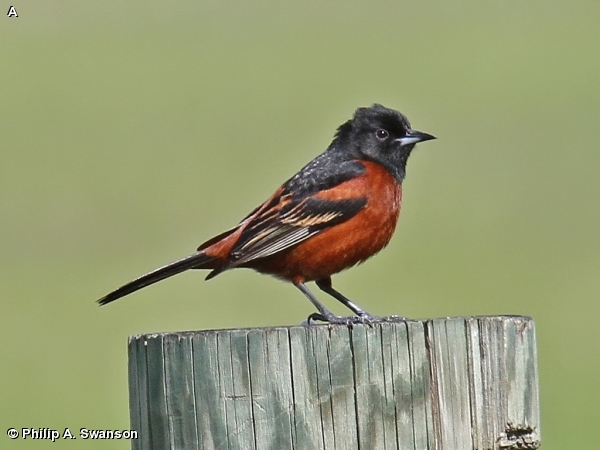
7.25 inches long. The Orchard Oriole has a blue-gray bill that is sharply pointed and slightly curved. The breeding male has a black hood, back, and tail. It also has burnt orange underparts, shoulders, and rump. The wing is black with an orange shoulder patch and white feather edges that appear as bars. The female has grayish-olive upperparts and yellowish underparts. There are two wing bars. Immature/first spring males are similar to females but have a black bib. Molting occurs after migration. The smaller Orchard Oriole is very similar to a Baltimore Oriole (Icterus galbula) but its burnt orange plumage is much duller than the bright orange plumage of the Baltimore Oriole.
The Orchard Oriole is a somewhat common summer breeder that arrives by late April to Early May and is usually gone by early September.
The Orchard Oriole leaves the breeding ground as early as mid July. It nests late and raises only a single brood to accommodate its migration schedule. It is vocal and often conspicuous. It feeds on larvae, fruit, insects, and nectar. The Orchard Oriole favors edges of low woods and stands of trees in open country. The nests are woven pouches or hanging bags of plant fibers suspended from twigs. The song is a rapid jumble of whistled notes and buzzes that are downslurred at the end.
Disclaimer: The content of NatureSearch is provided by dedicated volunteer Naturalists of Fontenelle Forest who strive to provide the most accurate information available. Contributors of the images retain their copyrights. The point of contact for this page is: Phil Swanson.

